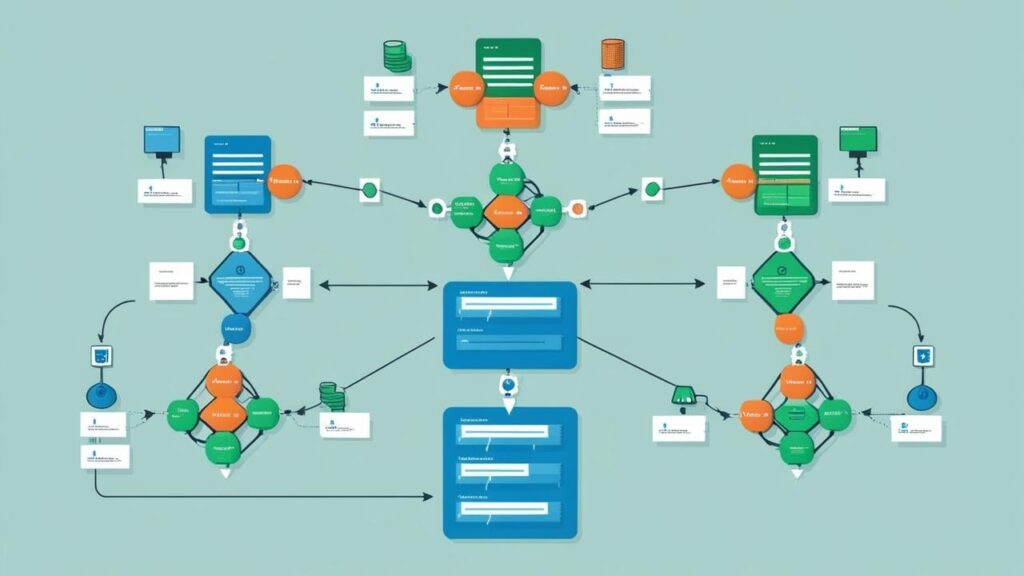
In today’s fast-paced digital landscape, delivering exceptional customer service isn’t just a goal—it’s a necessity. Here comes Decision Trees, a powerful tool that transforms chaotic support workflows into structured, logic-driven processes. But how do you unlock their full potential? Spoiler alert: Pairing them with Process Shepherd is the secret sauce. Let’s dive in!
What Is a Decision Tree in Customer Service?
A decision tree is a visual roadmap that guides support agents or customers through a series of yes/no questions to resolve issues efficiently. Think of it as a choose-your-own-adventure book for troubleshooting. In Zendesk, decision trees automate ticket routing, reduce human error, and ensure every query lands in the right inbox.
For instance, if a customer asks, “How do I reset my password?” the decision tree might route them to self-service guides, while a billing issue goes straight to your finance team. Simple, right? But without tools like Process Shepherd, building and maintaining these trees can feel like herding cats.
Why Zendesk Decision Trees Matter for Modern Support Teams:
Zendesk isn’t just a ticketing system—it’s the backbone of customer-centric businesses. Here’s why decision trees are non-negotiable:
- Scalability: Handle 10 or 10,000 tickets without breaking a sweat.
- Consistency: Ensure every customer receives the same high-quality experience.
- Speed: Slash resolution times by up to 50% with automated pathways.
Still, many teams struggle with clunky workflows. That’s where Process Shepherd swoops in, turning Zendesk into a well-oiled machine.
How Process Shepherd Transforms Zendesk Decision Trees:
Let’s cut to the chase: Process Shepherd is the Swiss Army knife of workflow automation. Here’s how it elevates Zendesk:
- No-Code Automation: Drag-and-drop interface? Check. Build complex decision trees without IT help.
- Centralized Control: Manage all workflows from one dashboard—no more jumping between tabs.
- Real-Time Analytics: Spot bottlenecks before they become wildfires.
Imagine reducing misrouted tickets by 80% overnight. With Process Shepherd, it’s not a pipe dream.
Step 3: Integrating Process Shepherd for Advanced Automation:
Integration is a breeze:
- Connect Zendesk to Process Shepherd via API (takes 5 minutes).
- Import existing decision trees or build new ones from scratch.
- Set up triggers for escalations, like high-priority tickets.
Pro Tip: Use Process Shepherd’s pre-built templates to fast-track your setup.
Zendesk vs. Process Shepherd: A Synergistic Partnership:
Zendesk’s native tools are solid, but Process Shepherd adds rocket fuel:
| Feature | Zendesk Alone | Zendesk + Process Shepherd |
|---|---|---|
| Workflow Customization | Basic | Advanced (if-else logic, loops) |
| Analytics | Surface-level | Granular, actionable insights |
| User Experience | Functional | Frictionless and intuitive |
FAQs About Zendesk Decision Trees and Process Shepherd:
- How do decision trees improve customer satisfaction? By delivering faster, accurate resolutions. No more “Sorry, I’ll transfer you” limbo.
- Can Process Shepherd handle multi-language support? Absolutely! Build decision trees in 15+ languages with a few clicks.
- Is coding required to use Process Shepherd? Nope—its no-code platform is perfect for non-techies.
- What if my workflows change frequently? Update trees in real-time without disrupting live operations.
- How secure is Process Shepherd? It’s very secure and GDPR-compliant.
- Can I try Process Shepherd for free? Yes! Grab your free tier account here.
Supercharge Zendesk with Process Shepherd:
Zendesk Decision Trees are revolutionary, but pairing them with Process Shepherd is like adding nitro to your engine. From slashing ticket times to boosting agent morale, the ROI is undeniable. Ready to transform your support game? Visit Process Shepherd today and automate your way to greatness.
P.S. Still manually routing tickets? You’re leaving money on the table. Process Shepherd fixes that—fast.



